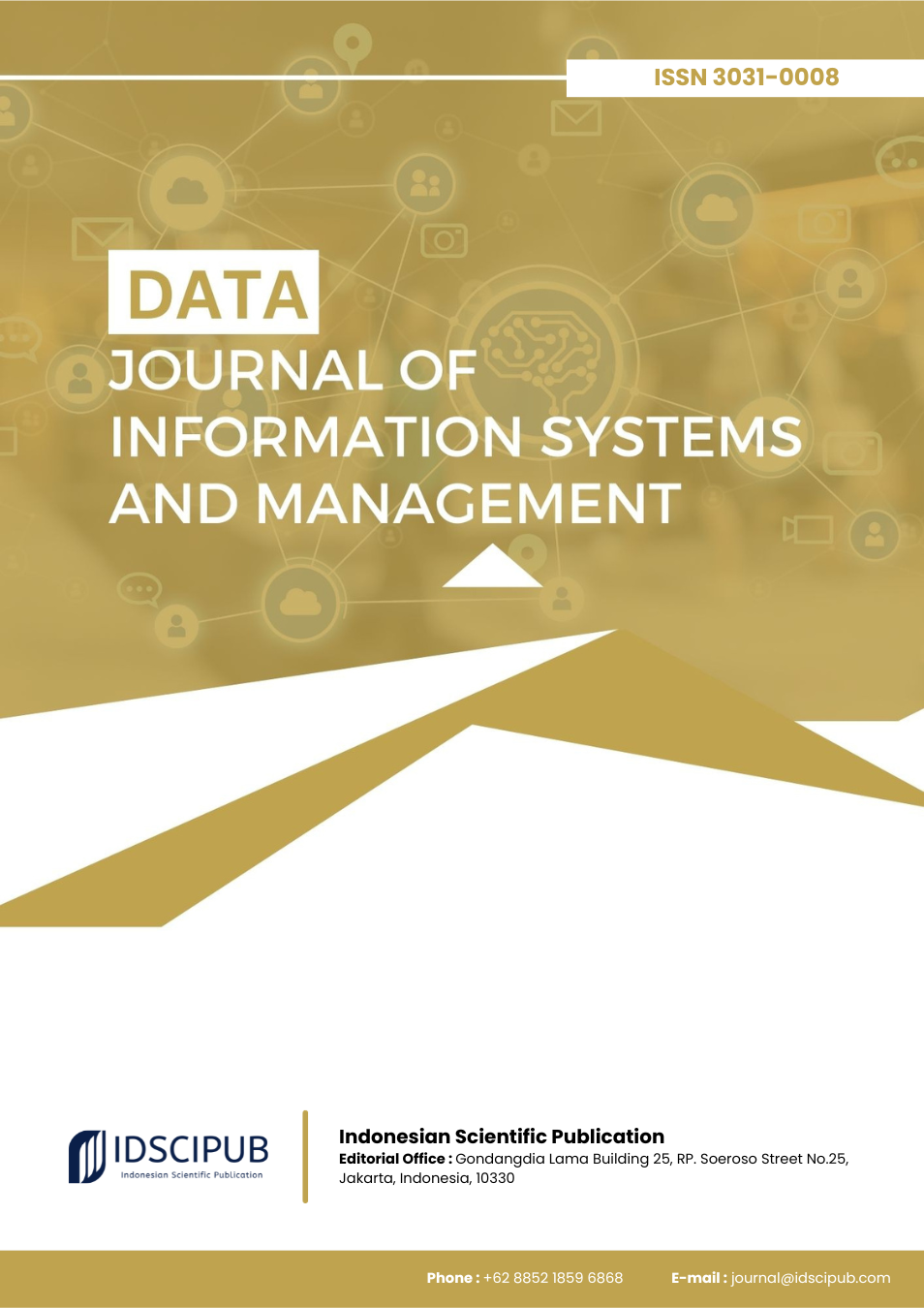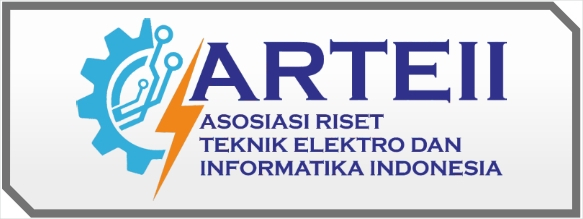Strategic IT–Business Alignment and Big Data Analytics Capability: A Configurational Approach to Operational Excellence in Manufacturing
DOI:
https://doi.org/10.61978/data.v3i3.909Keywords:
Strategic Alignment, Big Data Analytics, IT Flexibility, fsQCA, Operational Performance, Manufacturing Strategy, Industry 4.0Abstract
In the era of Industry 4.0, manufacturing firms face growing pressure to enhance operational performance through digital transformation. Central to this transformation is the strategic alignment between IT capabilities and business objectives, supported by advanced analytics and flexible IT infrastructures. This study investigates how different configurations of Strategic Alignment Maturity (SAMM), Big Data Analytics Capability (BDAC), IT flexibility, and business strategy types influence operational outcomes. Employing fuzzy set Qualitative Comparative Analysis (fsQCA) on data collected from 100 manufacturing firms, the research identifies multiple equifinal pathways to high operational performance, as measured by Overall Equipment Effectiveness (OEE) and SCOR metrics. Two dominant configurations emerge from the analysis. The first (R1) combines high levels of SAMM, IT flexibility, BDAC, and a Prospector strategy, highlighting a proactive, innovation oriented approach to operational excellence. The second configuration (R4) achieves similar performance through a different route leveraging BDAC, an Analyzer strategy, and strong CIO–business collaboration even in the absence of mature alignment structures. These results affirm that both alignment driven and analytics driven models can yield superior outcomes depending on organizational context and strategic orientation. The study contributes to the literature by demonstrating that high operational performance does not rely on a single universal model, but rather on the strategic orchestration of complementary capabilities. It also shows the effectiveness of fsQCA in uncovering complex causal relationships within organizational systems. Practically, the findings encourage manufacturing leaders to assess and tailor their alignment, analytics, and IT strategies according to their operational priorities and industry dynamics.
References
Akter, S., Wamba, S. F., Gunasekaran, A., Dubey, R., & Childe, S. J. (2016). How to Improve Firm Performance Using Big Data Analytics Capability and Business Strategy Alignment? International Journal of Production Economics, 182, 113–131. https://doi.org/10.1016/j.ijpe.2016.08.018 DOI: https://doi.org/10.1016/j.ijpe.2016.08.018
Alfalla-Luque, R., Machuca, J. A. D., & Marín-García, J. A. (2018). Triple-a and Competitive Advantage in Supply Chains: Empirical Research in Developed Countries. International Journal of Production Economics, 203, 48–61. https://doi.org/10.1016/j.ijpe.2018.05.020 DOI: https://doi.org/10.1016/j.ijpe.2018.05.020
Alghamdi, O., & Agag, G. (2023). Boosting Innovation Performance Through Big Data Analytics Powered by Artificial Intelligence Use: An Empirical Exploration of the Role of Strategic Agility and Market Turbulence. Sustainability, 15(19), 14296. https://doi.org/10.3390/su151914296 DOI: https://doi.org/10.3390/su151914296
Alghamdi, R., Bedaiwi, A., & Al-Nazawi, A. M. (2024). Epidemiological Trends of Malaria Infection in Jeddah, Saudi Arabia, 2018-2023. Frontiers in Public Health, 12. https://doi.org/10.3389/fpubh.2024.1476951 DOI: https://doi.org/10.3389/fpubh.2024.1476951
Appelbaum, S. H., Calla, R., Desautels, D., & Hasan, L. N. (2017). The Challenges of Organizational Agility (Part 1). Industrial and Commercial Training, 49(1), 6–14. https://doi.org/10.1108/ict-05-2016-0027 DOI: https://doi.org/10.1108/ICT-05-2016-0027
Arneja, N., & Sharma, C. (2025). Imports and Finance: First Empirical Evidence for Indian Manufacturing Firms. Journal of Economic Studies. https://doi.org/10.1108/jes-11-2024-0780 DOI: https://doi.org/10.1108/JES-11-2024-0780
Awan, U., Bhatti, S. H., Shamim, S., Khan, Z., Akhtar, P., & Balta, M. (2021). The Role of Big Data Analytics in Manufacturing Agility and Performance: Moderation–Mediation Analysis of Organizational Creativity and of the Involvement of Customers as Data Analysts. British Journal of Management, 33(3), 1200–1220. https://doi.org/10.1111/1467-8551.12549 DOI: https://doi.org/10.1111/1467-8551.12549
Chen, A. M., Armbruster, A. L., Buckley, B., Campbell, J. A., Dang, D. K., Devraj, R., Drame, I., Edwards, A., Haack, S., Ma, Q., Petry, N., Planas, L. G., Sadowski, C. A., Santee, J., Wade, L., & Borja‐Hart, N. (2021). Inclusion of Health Disparities, Cultural Competence, and Health Literacy Content in US and Canadian Pharmacy Curriculums. American Journal of Pharmaceutical Education, 85(1), 8200. https://doi.org/10.5688/ajpe8200 DOI: https://doi.org/10.5688/ajpe8200
Feng, T., & Sheng, H. (2023). Identifying the Equifinal Configurations of Prompting Green Supply Chain Integration and Subsequent Performance Outcome. Business Strategy and the Environment, 32(8), 5234–5251. https://doi.org/10.1002/bse.3414 DOI: https://doi.org/10.1002/bse.3414
Garrido‐Vega, P., Dı́az, M. S., Fuentes, J. M., & Alfalla-Luque, R. (2021). The Role of Competitive Environment and Strategy in the Supply Chain’s Agility, Adaptability and Alignment Capabilities. European Journal of Management and Business Economics, 32(2), 133–148. https://doi.org/10.1108/ejmbe-01-2021-0018 DOI: https://doi.org/10.1108/EJMBE-01-2021-0018
Gligor, D., Feizabadi, J., Russo, I., Maloni, M. J., & Goldsby, T. J. (2020). The Triple-a Supply Chain and Strategic Resources: Developing Competitive Advantage. International Journal of Physical Distribution & Logistics Management, 50(2), 159–190. https://doi.org/10.1108/ijpdlm-08-2019-0258 DOI: https://doi.org/10.1108/IJPDLM-08-2019-0258
Gomes, P. J., & Silva, G. M. (2025). Navigating the Interplay Between Digitalization and Triple‐A Capabilities for Enhanced Supply Chain Resilience. Journal of Business Logistics, 46(3). https://doi.org/10.1111/jbl.70018 DOI: https://doi.org/10.1111/jbl.70018
Gunasekaran, A., Yusuf, Y., Adeleye, E. O., & Παπαδόπουλος, Θ. (2017). Agile Manufacturing Practices: The Role of Big Data and Business Analytics With Multiple Case Studies. International Journal of Production Research, 56(1–2), 385–397. https://doi.org/10.1080/00207543.2017.1395488 DOI: https://doi.org/10.1080/00207543.2017.1395488
Jena, M. C., Mishra, S. K., & Moharana, H. S. (2019). Application of Industry 4.0 to Enhance Sustainable Manufacturing. Environmental Progress & Sustainable Energy, 39(1). https://doi.org/10.1002/ep.13360 DOI: https://doi.org/10.1002/ep.13360
Kang, W., Shao, B., & Zhang, Y. (2024). How Does Interactivity Shape Users’ Continuance Intention of Intelligent Voice Assistants? Evidence From SEM and fsQCA. Psychology Research and Behavior Management, Volume 17, 867–889. https://doi.org/10.2147/prbm.s438465 DOI: https://doi.org/10.2147/PRBM.S438465
Khan, M. A., Haddad, H., Odeh, M., Haider, A., & Khan, M. A. (2022). Institutions, Culture, or Interaction: What Determines the Financial Market Development in Emerging Markets? Sustainability, 14(23), 15883. https://doi.org/10.3390/su142315883 DOI: https://doi.org/10.3390/su142315883
Li, L., Lin, J., Turel, O., Liu, P., & Luo, X. (2020). The Impact of E-Commerce Capabilities on Agricultural Firms’ Performance Gains: The Mediating Role of Organizational Agility. Industrial Management & Data Systems, 120(7), 1265–1286. https://doi.org/10.1108/imds-08-2019-0421 DOI: https://doi.org/10.1108/IMDS-08-2019-0421
Lowry, P. B., & Wilson, D. M. (2016). Creating Agile Organizations Through IT: The Influence of Internal IT Service Perceptions on IT Service Quality and IT Agility. The Journal of Strategic Information Systems, 25(3), 211–226. https://doi.org/10.1016/j.jsis.2016.05.002 DOI: https://doi.org/10.1016/j.jsis.2016.05.002
Nyamah, E. Y., Feng, Y., Nyamah, E. Y., Opoku, R. K., & Ewusi, M. (2022). Procurement Process Risk and Performance: Empirical Evidence From Manufacturing Firms. Benchmarking an International Journal, 30(1), 75–101. https://doi.org/10.1108/bij-06-2021-0306 DOI: https://doi.org/10.1108/BIJ-06-2021-0306
Panda, S. (2021). Strategic IT-business Alignment Capability and Organizational Performance: Roles of Organizational Agility and Environmental Factors. Journal of Asia Business Studies, 16(1), 25–52. https://doi.org/10.1108/jabs-09-2020-0371 DOI: https://doi.org/10.1108/JABS-09-2020-0371
Piran, F. S., Paris, A. d., Lacerda, D. P., Camargo, L. F. R., Serrano, R., & Cassel, R. A. (2020). Overall Equipment Effectiveness: Required but Not Enough—An Analysis Integrating Overall Equipment Effect and Data Envelopment Analysis. Global Journal of Flexible Systems Management, 21(2), 191–206. https://doi.org/10.1007/s40171-020-00238-6 DOI: https://doi.org/10.1007/s40171-020-00238-6
Rasoolimanesh, S. M., Naser, V., & Rezaei, S. (2023). Guideline for Application of Fuzzy-Set Qualitative Comparative Analysis (fsQCA) in Tourism and Hospitality Studies. 137–156. https://doi.org/10.1108/978-1-80455-063-220231009 DOI: https://doi.org/10.1108/978-1-80455-063-220231009
Sardo, F., & Serrasqueiro, Z. (2021). Determinants of Working Capital: Empirical Evidence on Manufacturing SMEs. Journal of Economic Studies, 49(3), 506–521. https://doi.org/10.1108/jes-10-2020-0513 DOI: https://doi.org/10.1108/JES-10-2020-0513
Shahzad, M., Qu, Y., Zafar, A. U., & Appolloni, A. (2021). Does the Interaction Between the Knowledge Management Process and Sustainable Development Practices Boost Corporate Green Innovation? Business Strategy and the Environment, 30(8), 4206–4222. https://doi.org/10.1002/bse.2865 DOI: https://doi.org/10.1002/bse.2865
Shamout, M. D. (2020). Supply Chain Data Analytics and Supply Chain Agility: A Fuzzy Sets (fsQCA) Approach. International Journal of Organizational Analysis, 28(5), 1055–1067. https://doi.org/10.1108/ijoa-05-2019-1759 DOI: https://doi.org/10.1108/IJOA-05-2019-1759
Singh, S., Khamba, J. S., & Singh, D. (2022). Analysis of Potential Factors Affecting Execution of Overall Equipment Effectiveness in Indian Sugar Mills. Proceedings of the Institution of Mechanical Engineers Part E Journal of Process Mechanical Engineering, 237(6), 2323–2333. https://doi.org/10.1177/09544089221135010 DOI: https://doi.org/10.1177/09544089221135010
Song, J., Xia, S., Vrontis, D., Sukumar, A., Liao, B., Li, Q., Tian, K., & Yao, N. (2022). The Source of SMEs’ Competitive Performance in COVID-19: Matching Big Data Analytics Capability to Business Models. Information Systems Frontiers, 24(4), 1167–1187. https://doi.org/10.1007/s10796-022-10287-0 DOI: https://doi.org/10.1007/s10796-022-10287-0
Teece, D. J., Peteraf, M. A., & Leih, S. (2016). Dynamic Capabilities and Organizational Agility: Risk, Uncertainty, and Strategy in the Innovation Economy. California Management Review, 58(4), 13–35. https://doi.org/10.1525/cmr.2016.58.4.13 DOI: https://doi.org/10.1525/cmr.2016.58.4.13
Tortorella, G. L., & Fettermann, D. C. (2018). Help Chain in Companies Undergoing a Lean Implementation. International Journal of Lean Six Sigma, 9(1), 113–132. https://doi.org/10.1108/ijlss-08-2016-0039 DOI: https://doi.org/10.1108/IJLSS-08-2016-0039
Tribbe, J., Zuin, V., Delaire, C., Khush, R., & Peletz, R. (2021). How Do Rural Communities Sustain Sanitation Gains? Qualitative Comparative Analyses of Community-Led Approaches in Cambodia and Ghana. Sustainability, 13(10), 5440. https://doi.org/10.3390/su13105440 DOI: https://doi.org/10.3390/su13105440
Wamba, S. F., Gunasekaran, A., Akter, S., Ren, S. J., Dubey, R., & Childe, S. J. (2017). Big Data Analytics and Firm Performance: Effects of Dynamic Capabilities. Journal of Business Research, 70, 356–365. https://doi.org/10.1016/j.jbusres.2016.08.009 DOI: https://doi.org/10.1016/j.jbusres.2016.08.009
Wang, F., Nan, N., & Zhao, J. (2024). Configuring Mobile App Update Strategy for Growth: An Empirical Analysis of a Landscape Search Model. Industrial Management & Data Systems, 124(3), 1155–1178. https://doi.org/10.1108/imds-03-2023-0181 DOI: https://doi.org/10.1108/IMDS-03-2023-0181
Yu, Y., Huo, B., & Zhang, Z. (2021). Impact of Information Technology on Supply Chain Integration and Company Performance: Evidence From Cross-Border E-Commerce Companies in China. Journal of Enterprise Information Management, 34(1), 460–489. https://doi.org/10.1108/jeim-03-2020-0101 DOI: https://doi.org/10.1108/JEIM-03-2020-0101






